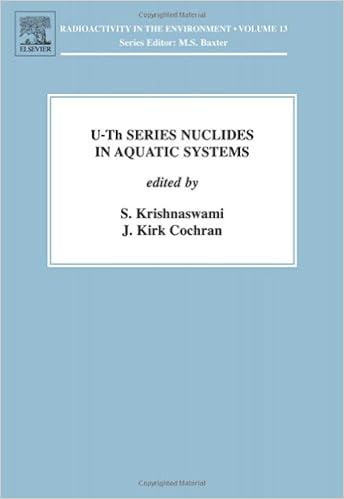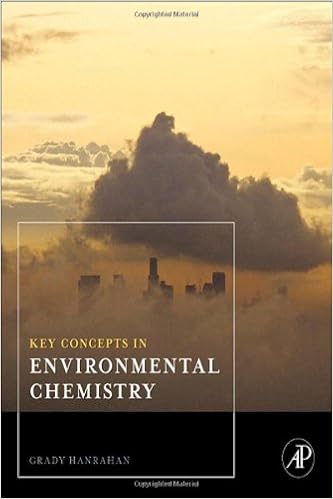
This evaluation quantity is split into elements. the 1st half contains 5 assessment papers on a variety of numerical versions. Pedersen presents a short yet thorough evaluation of the theoretical historical past for depth-integrated wave equations, that are hired to simulate tsunami runup. LeVeque and George describe high-resolution finite quantity equipment for fixing the nonlinear shallow water equations. the focal point in their dialogue is at the functions of those how you can tsunami runup.
in recent times, numerous complex 3D numerical versions were brought to the sector of coastal engineering to calculate breaking waves and wave constitution interactions. those versions are nonetheless lower than improvement and are at diverse levels of adulthood. Rogers and Dalrymple speak about the graceful debris Hydrodynamics (SPH) technique, that is a meshless procedure. Wu and Liu current their huge Eddy Simulation (LES) version for simulating the landslide-generated waves. eventually, Frandsen introduces the lattice Boltzmann strategy with the dignity of a loose floor.
the second one a part of the overview quantity comprises the descriptions of the benchmark issues of 11 prolonged abstracts submitted by means of the workshop individuals. a lot of these papers are in comparison with their numerical effects with benchmark recommendations.
Contents: Modeling Runup with Depth-Integrated Equation versions (G Pedersen); High-Resolution Finite quantity tools for the Shallow Water Equations with Bathymetry and Dry States (R J LeVeque & D L George); SPH Modeling of Tsunami Waves (B D Rogers & R A Dalrymple); a wide Eddy Simulation version for Tsunami and Runup Generated via Landslides (T-R Wu & P L-F Liu); Free-Surface Lattice Boltzmann Modeling in unmarried part Flows (J B Frandsen); Benchmark difficulties (P L-F Liu et al.); Tsunami Runup onto a airplane seashore (Z Kowalik et al.); Nonlinear Evolution of lengthy Waves over a Sloping seashore (U Kâno lu); Amplitude Evolution and Runup of lengthy Waves, comparability of Experimental and Numerical information on a 3D advanced Topography (A C Yalciner et al.); Numerical Simulations of Tsunami Runup onto a three-d seashore with Shallow Water Equations (X Wang et al.); 3D Numerical Simulation of Tsunami Runup onto a fancy seashore (T Kakinuma); comparing Wave Propagation and Inundation features of the main Tsunami version over a posh 3D seashore (A Chawla et al.); Tsunami new release and Runup because of a second Landslide (Z Kowalik et al.); Boussinesq Modeling of Landslide-Generated Waves and Tsunami Runup (O Nwogu); Numerical Simulation of Tsunami Runup onto a fancy seashore with a Boundary-Fitting mobilephone approach (H Yasuda); A 1D Lattice Boltzmann version utilized to Tsunami Runup onto a aircraft seashore (J B Frandsen); A Lagrangian version utilized to Runup difficulties (G Pedersen); Appendix: Phase-Averaged Towed PIV Measurements for normal Head Waves in a version send Towing Tank (J Longo et al.).
Read Online or Download Advanced Numerical Models For Simulating Tsunami Waves And Runup (Advances in Coastal & Ocean Engineering) PDF
Similar Oceanography books
U-Th Series Nuclides in Aquatic Systems, Volume 13 (Radioactivity in the Environment)
Significant development within the U-Th size concepts because the 1990's have ended in new possibilities for using those nuclides to probe into aquatic approaches in higher element. This quantity presents state of the art studies at the purposes of U-Th sequence nuclides to "time" and "tag" in a number of methods taking place in aquatic platforms.
Advances in Geophysics, Vol. 44
This sequence offers a venue for longer reports of present advances in geophysics. Written at a degree obtainable to graduate scholars, the articles serve to develop wisdom of assorted fields and should be worthy in classes and seminars.
Key Concepts in Environmental Chemistry
Key thoughts in Environmental Chemistry presents a contemporary and concise advent to environmental chemistry ideas and the dynamic nature of environmental structures. It deals an extreme, one-semester exam of chosen thoughts encountered during this box of research and offers built-in instruments in explaining advanced chemical difficulties of environmental significance.
Biogeochemistry of Marine Dissolved Organic Matter, Second Edition
Marine dissolved natural subject (DOM) is a fancy mix of molecules stumbled on through the world's oceans. It performs a key position within the export, distribution, and sequestration of carbon within the oceanic water column, posited to be a resource of atmospheric weather law. Biogeochemistry of Marine Dissolved natural topic, moment version, specializes in the chemical ingredients of DOM and its biogeochemical, organic, and ecological importance within the international ocean, and offers a unmarried, distinctive resource for the references, details, and knowledgeable judgments of the neighborhood of marine biogeochemists.
Extra resources for Advanced Numerical Models For Simulating Tsunami Waves And Runup (Advances in Coastal & Ocean Engineering)



